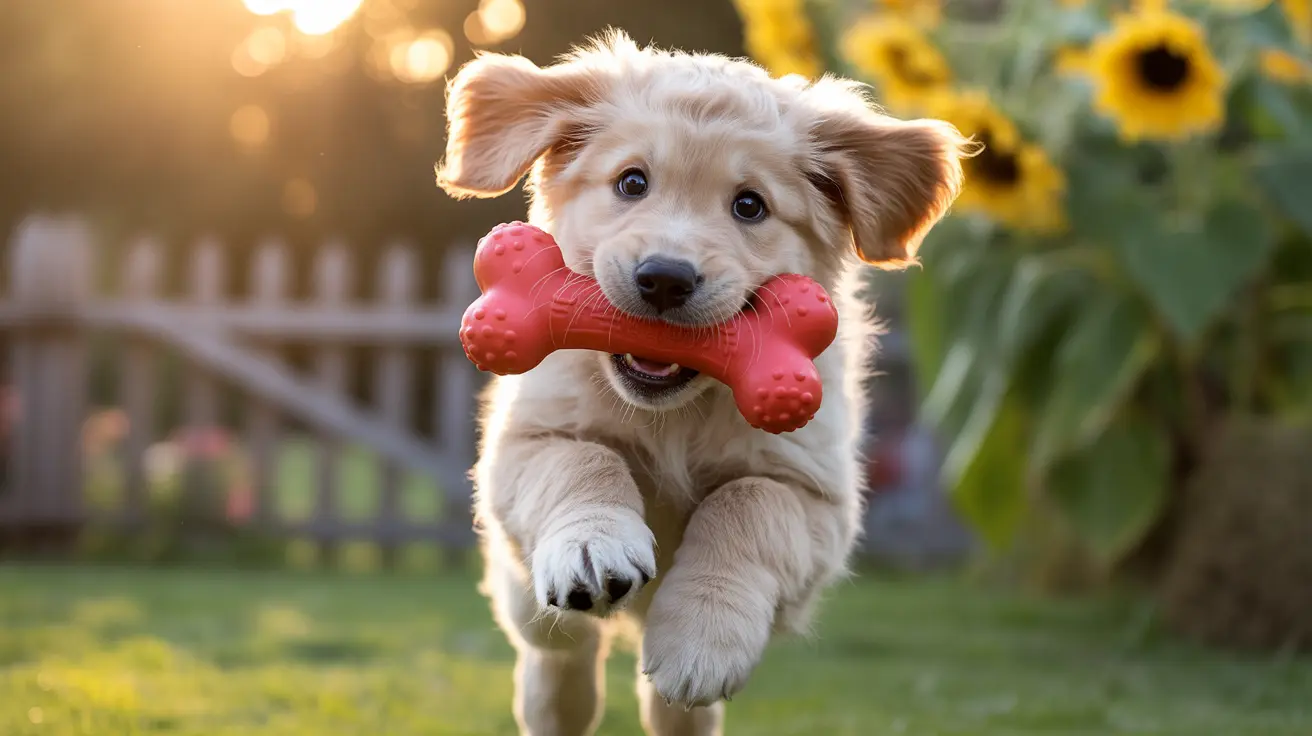Understanding Golden Retriever Energy Levels
Golden Retrievers are beloved for their playful personalities and boundless energy, but many owners wonder when their energetic puppies will finally settle down. While every dog develops at their own pace, most Golden Retrievers begin showing signs of calming down around the age of 2-3 years. However, this process is gradual and depends on various factors including genetics, training, and lifestyle.
Understanding the typical developmental timeline and what influences your Golden's energy levels can help you manage expectations and provide appropriate care during each life stage. Let's explore when and how Golden Retrievers mature, and what you can do to support their journey to becoming calmer adult dogs.
The Golden Retriever Maturity Timeline
Puppy Stage (0-6 months)
During these early months, Golden Retriever puppies are bundles of endless energy. They're exploring their world through play, chewing, and constant movement. This stage requires the most patience from owners, as puppies have virtually no impulse control and need frequent supervision.
- Frequent bursts of energy followed by sudden naps
- Teething and excessive chewing behaviors
- Short attention span
- High need for play and interaction
Adolescent Phase (6-18 months)
The teenage phase can be particularly challenging for Golden Retriever owners. During this time, dogs may actually seem to become more energetic and test boundaries more frequently. This period requires consistent training and plenty of physical activity to manage their increasing strength and energy levels.
Young Adult Transition (18-24 months)
Around this age, most Golden Retrievers begin showing the first real signs of calming down. You may notice:
- Longer periods of relaxed behavior
- Better response to commands
- Improved impulse control
- More predictable energy patterns
Factors That Influence Calming Down
Exercise and Physical Activity
Regular exercise is crucial for helping your Golden Retriever maintain balanced energy levels. Adult Goldens need 1-2 hours of activity daily, which should include:
- Structured walks
- Off-leash play time
- Swimming (if possible)
- Fetch and retrieval games
Mental Stimulation
Mental exercise is just as important as physical activity for calming your Golden Retriever. Incorporate:
- Training sessions
- Puzzle toys
- Nose work activities
- Social interaction with other dogs
Tips for Managing Energy Levels
Consistent Training
Start training early and maintain consistency throughout your dog's development. Focus on:
- Basic obedience commands
- Impulse control exercises
- Positive reinforcement techniques
- Structured daily routines
Environmental Management
Create an environment that promotes calm behavior:
- Designate quiet spaces for rest
- Provide appropriate chew toys
- Establish a regular schedule
- Limit overstimulating situations
Frequently Asked Questions
At what age do Golden Retrievers typically start to calm down and show less hyperactivity?
Most Golden Retrievers begin showing significant signs of calming down between 2-3 years of age, though some may take longer depending on individual temperament and lifestyle factors.
How can I help my Golden Retriever puppy manage their high energy and settle down faster?
Provide plenty of structured exercise, mental stimulation through training and puzzle toys, and maintain consistent daily routines. Reward calm behavior when it occurs naturally.
What role does exercise and mental stimulation play in calming a Golden Retriever?
Regular exercise and mental stimulation are crucial for managing energy levels. Aim for 1-2 hours of daily physical activity combined with training, puzzle toys, and interactive play.
Why does my adolescent Golden Retriever still act hyper, and when will this phase end?
The adolescent phase (6-18 months) is typically the most energetic period. This is normal and usually begins to subside as they approach 2 years of age with proper training and exercise.
How important is early socialization and training in developing a calm adult Golden Retriever?
Early socialization and training are essential for developing a well-balanced adult dog. These experiences help build confidence, reduce anxiety-driven hyperactivity, and teach appropriate behavior in various situations.
Conclusion
While Golden Retrievers are naturally energetic dogs, understanding their developmental timeline and providing appropriate exercise, training, and mental stimulation will help them mature into calmer adult companions. Remember that every dog is unique, and patience combined with consistent positive training will yield the best results in helping your Golden Retriever develop into a well-balanced adult dog.






